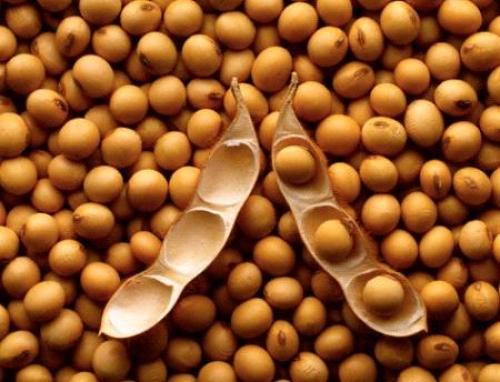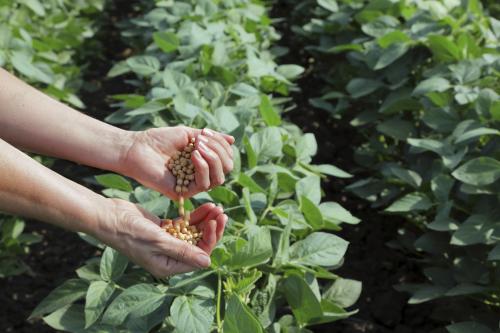
Storage of raw soy beans
Permitted storage times depend on the variety of seed, harvesting technology, and the temperature and humidity of the storage location. Particularly important among these factors are temperature and humidity. The lower the humidity the longer the soybeans can be stored. Likewise, warmer and drier conditions will extend storage times.
The type of storage receptacle will also have an effect on storage times. Normally, after drying for two to three hours, the soybeans will be poured into containers or jars which have been sanitized. These containers are filled to capacity and have humidity control features.
There are two main storage methods for soybeans.
Traditional storage
Storage method using containers or jars: Containers, glazed jars or glass jars are inspected for cracks and then cleaned and dried, bottoms lined with moisture absorbing powdered lime. On top of this is placed a layer of dry bead tree leaves, on which the soy beans are poured. The jars are stored in a dry and well ventilated area. Coal can also be used to absorb moisture, either placed under the layer of soy beans or above, before the lids are sealed tight.
Storage method using plastic bags: After drying, the beans are poured into two layer plastic bags, which are then placed in containers surrounded by moisture absorbing rice husks or simply stored in a dry and well ventilated area. Care is taken not to pile the bags too high.
Experimental storage (Japanese method)
-Basudin 10H used at 10 grams per 10kg of soy beans
-Stored in airtight plastic bags
-Bags placed sealed in plastic containers
-Final plastic covering layer added
-Left in well-ventilated area

Soy planting methods
Soy beans are native to Southeast Asia, but 45 percent of the world’s planted land area and 55% of the world’s harvest are in the US. The US produced 75 million tons of soy beans in 2000, over one-third of which were exported. Other large scale producers include Brazil, Argentina, China and India. Most of the soy beans harvested in the US are either used as cattle feed or exported, despite rising consumer interest.
Soy beans can be planted year round; however each growing period has unique factors relating to blossoming, disease, yield, bean composition and cost.
Growing times and factors
Spring Summer: Sowing takes place between 15 February and 20 March. The area planted is concentrated in the Mekong Delta provinces in the South (An Giang, Dong Thap), and Ha Bac, Lang Son and Cao Bang provinces In the North. It is important to note that this harvest period represents a higher than normal disease and infestation risk in the South.
Summer Fall: The best time for sowing is from 05 April to 20 April. The disadvantage of this period is a high reliance on the first rains of the season; if the rains do not come as expected this can lead to a drought period which starves the seedling. Long days with ample sunlight will lead to a lengthening of the blossoming period during which the leaves of the plants will take up a large amont of space. Because of this it is important to ensure the plants are spaced relatively sparsely.
Fall Winter: Sowing takes place from 15 July to 05 August. Beans grown during this period suffer relatively little worm and insect infestation, and the harvest period is convenient for drying and preparation for storage.
Winter: Concentrated in the Northern provinces, sowing during this period takes place between 20 September and 05 October.
Winter Spring: The sowing period usually ranges from the end of November till the start of January and is concentrated in the Mekong Delta provinces. This period results in the highest relative yield. The best type of soil is light and soft, well broken, porous, with low acidity. Soil lacking in vital nutrients or heavy in alum can in some cases also be used, but with good irrigation and the use of fertilizer and lime.

